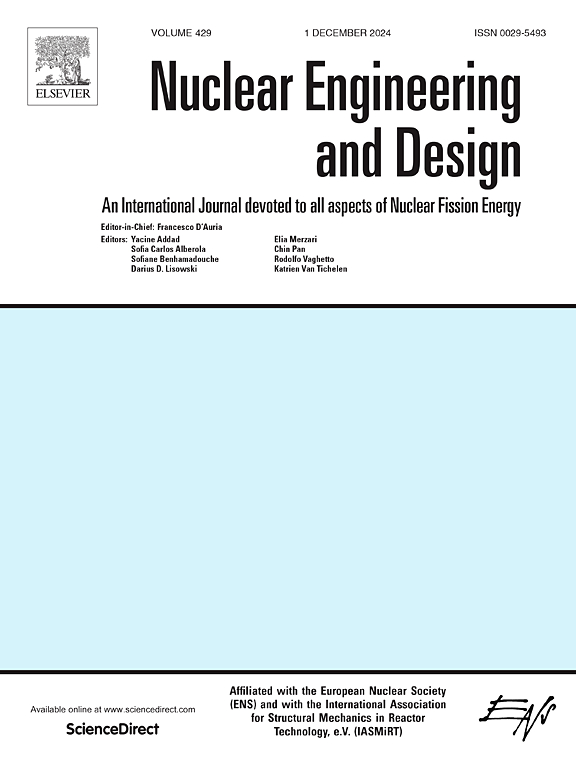NEAMS IRP challenge problem 3: Mixing in large enclosures and thermal stratification
IF 1.9
3区 工程技术
Q1 NUCLEAR SCIENCE & TECHNOLOGY
引用次数: 0
Abstract
Mixing in large enclosures and thermal stratification play critical roles in advanced reactor designs, including liquid metal-cooled and high-temperature gas reactors. Lessons from a recent international benchmark (IAEA, 2017), using system-level codes for Sodium-Cooled Fast Reactors (SFRs) highlight the need for improved models to accurately capture mixing and thermal stratification in the reactor hot pool upper plenum. These improvements are essential for predicting the propagation of stratification fronts and the effects on natural circulation and heat transfer between primary and intermediate loops. Current computational dynamics (CFD) codes, particularly those relying on Reynolds-averaged Navier-Stokes (RANS)-based turbulence models and the Simple Gradient-Diffusion Hypothesis (SGDH), underperform in simulating buoyancy-driven flows, leading to inaccurate predictions of stratified fronts. The NEAMS IRP Challenge Problem 3 (CP3) aims to develop multi-fidelity, multi-scale models for mixing and stratification in large enclosures. This includes models ranging from high-fidelity Large Eddy Simulations / Direct Numerical Simulations (DNS/LES) to system-level code models. High-resolution experiments and LES/DNS inform the development of these models, providing accurate and computationally affordable predictions. This paper provides an overview of ongoing experimental and modeling activities within CP3, showcasing advancements in understanding and predicting mixing and stratification in large enclosures for advanced reactor applications.
求助全文
约1分钟内获得全文
求助全文
来源期刊

Nuclear Engineering and Design
工程技术-核科学技术
CiteScore
3.40
自引率
11.80%
发文量
377
审稿时长
5 months
期刊介绍:
Nuclear Engineering and Design covers the wide range of disciplines involved in the engineering, design, safety and construction of nuclear fission reactors. The Editors welcome papers both on applied and innovative aspects and developments in nuclear science and technology.
Fundamentals of Reactor Design include:
• Thermal-Hydraulics and Core Physics
• Safety Analysis, Risk Assessment (PSA)
• Structural and Mechanical Engineering
• Materials Science
• Fuel Behavior and Design
• Structural Plant Design
• Engineering of Reactor Components
• Experiments
Aspects beyond fundamentals of Reactor Design covered:
• Accident Mitigation Measures
• Reactor Control Systems
• Licensing Issues
• Safeguard Engineering
• Economy of Plants
• Reprocessing / Waste Disposal
• Applications of Nuclear Energy
• Maintenance
• Decommissioning
Papers on new reactor ideas and developments (Generation IV reactors) such as inherently safe modular HTRs, High Performance LWRs/HWRs and LMFBs/GFR will be considered; Actinide Burners, Accelerator Driven Systems, Energy Amplifiers and other special designs of power and research reactors and their applications are also encouraged.
 求助内容:
求助内容: 应助结果提醒方式:
应助结果提醒方式:


